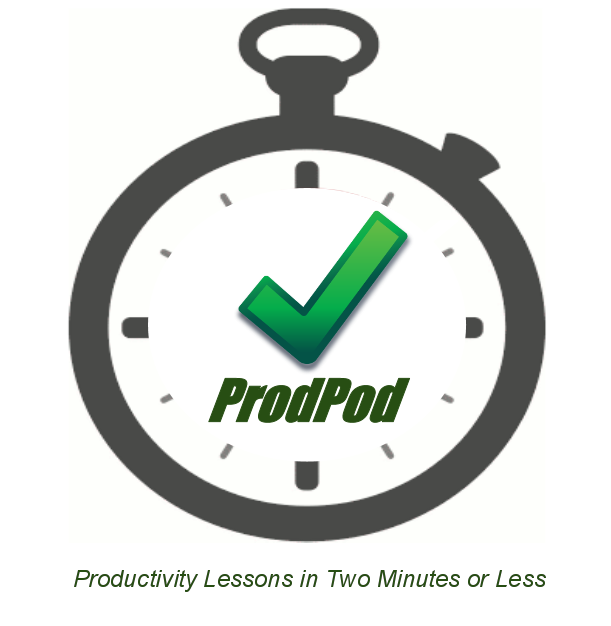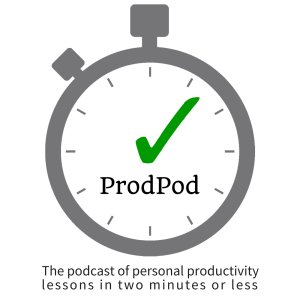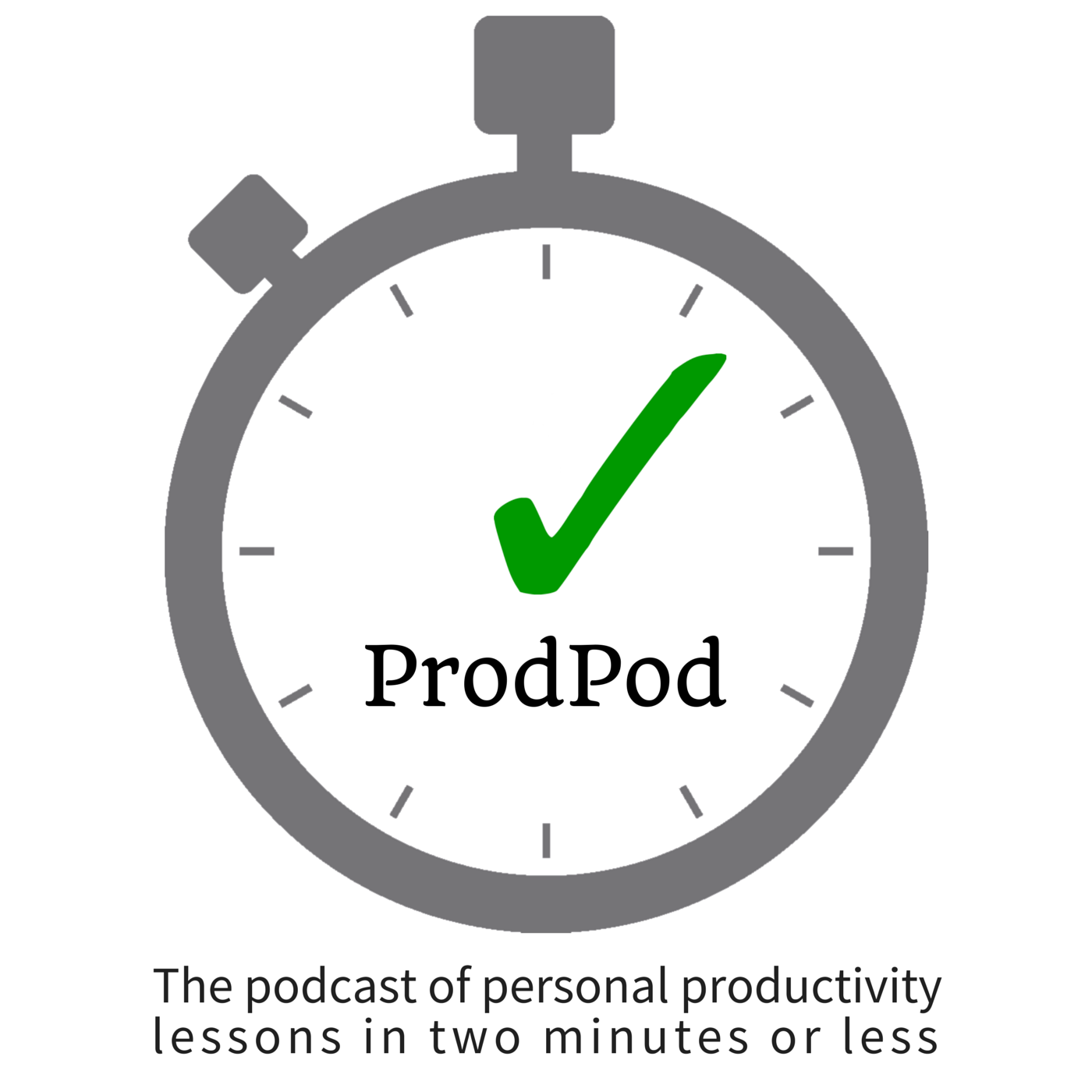Episodes

Tuesday Dec 10, 2013
Tuesday Dec 10, 2013
Ray: We're discussing hoarding in the ProdPod series…and I have Professional Organizer Sally Reinholdt here to define hoarding and how it's classified.
Sally: Hoarding is considered compulsive if it meets three criteria. First there is accumulation accompanied by great difficulty in discarding items that most people would consider useless or of limited value. The second criteria is that the clutter is to the point that the intended use of living spaces is severely limited or not possible. The third and last criteria is that the cluttering in combination with the acquiring and difficulty discarding causes significant impairment and distress.
Sally: The Institute for Challenging Disorganization classifies hoarding with a clutter measurement tool called the Clutter-Hoarding Scale. Homes are classified from Level I through Level V. A standard household is considered to be a Level I. Level II homes can have some narrowing of household pathways and inadequate housekeeping. Level III to Level V homes present increasingly serious situations. Clutter can be present outside as well as inside the home, there can be insect and rodent infestation and generally unsanitary conditions. Individuals working with hoarders in these types of situations need to have backgrounds ranging from but not limited to mental health and financial counseling to professional organizing, pest control and project management.
Ray: If you believe you might have hoarding issues, click on the link in the show notes here on ProdPod.net to download the Clutter-Hoarding Scale [ http://goo.gl/dy9xWf ] tool to see where you fall in the scale.
In the next episode we'll cover how hoarding is treated and managed.

Tuesday Dec 03, 2013
Tuesday Dec 03, 2013
These next three episodes will be on hoarding and I have with me to help explain hoarding, Sally Reinholdt, owner of Commonwealth Organizing Solutions [ http://cosolva.com ]. Sally is a Registered Nurse and professional organizer who uses many of the skills she learned as a nurse to help her clients become more organized and productive.
Sally: The short answer is that it can be anyone. Hoarding doesn’t discriminate. In some cases it appears to have a genetic component as hoarding can run in families. It can be the result of a traumatic experience but sometimes there is no clear trigger. Sadly, hoarders are many times very creative people who see all sorts of potential in the things they collect. Unfortunately their potential for using that creative energy is stymied by their need to constantly accumulate. There are also high levels of anxiety, depression and perfectionism associated with hoarding.
Sally: The number of hoarders in the United States is very difficult to calculate because in so many cases hoarders are able to hide their situations from family and friends until some sort of event or crisis brings the hoarding to light. Depending on the literature estimates for the number of hoarders in the United States ranges from 1.2 million to as many as 6 million people.
Sally: May, 2013, was the first time hoarding was included in the DSM-V with its own discrete clinical definition. It was previously categorized as symptom of obsessive-compulsive disorder.
Ray: Not that sweeping all your stuff under the carpet is the solution, but putting your clutter out of sight is a productivity hack in which you can reap immediate benefits. Princeton University Neuroscience Institute found that when you clear physical clutter in sight, you are less likely to be distracted and are more productive. If you're feeling distressed from physical clutter, take as much as you can and put it away so you see less of it…the more clear surfaces in sight the better. Try it. [ PUNI article, "Top-down and bottom-up mechanisms in biasing competition in the human brain": http://www.princeton.edu/~napl/pdf/BeckKastner2008.pdf ]
In Part II in this series on Hoarding, Sally and I will discuss how compulsive hoarding is defined and classified.

Wednesday Nov 27, 2013
ProdPod: Episode 76 -- Be Thankful, and Be Productive
Wednesday Nov 27, 2013
Wednesday Nov 27, 2013
“When you are grateful, fear disappears and abundance appears.” ~Anthony Robbins
Tony Robbins should know a thing about being thankful. When he speaks to audiences, he tells frequently of his humble beginnings, the gratitude he had in those who helped him survive then thrive, and the self-beneficial results of his giving back to his community and others. During this Thanksgiving holiday week, now's the time to think about how your productivity is enhanced by being grateful.
Don't believe me? Dr. Robert Emmons, psychology researcher, at UC Davis, has studied gratitude and well-being, and it shows that productivity toward goals increases with exhibiting more gratitude in your life. As the studies summary of findings states on the research department's website [ http://psychology.ucdavis.edu/Labs/emmons/PWT/index.cfm?Section=4 ], those "who kept gratitude lists were more likely to have made progress toward important personal goals." And, "daily gratitude intervention (self-guided exercises) ... resulted in higher reported levels of the positive states of alertness, enthusiasm, determination, attentiveness and energy."
So, how might you use gratitude practically in your own productive life?
Lisa Peake on her blog at PeakeProductivity.com offers a great suggestion: "write down a few things you are grateful for each evening. Start with this evening and see where it goes from there. You may be surprised at how much you have to be thankful for."
Jason Womack, author of Your Best Just Got Better [ http://amzn.to/1crZDmn ], has a practice of mailing a daily thank-you card…this brings tangible rewards in responses of offers to collaborate, keeping you top of the mind with your audience, and the brain's release of dopamine (those are the good brain chemicals that make you feel great) that you get from making someone's day brighter. While I opt to sending out thank-you emails more often than printed cards to mail, the technique is still quite powerful for me.
And, with all this talk of gratitude let me take this time to say, thank you for listening to ProdPod! I am grateful everyday for the thousands of listeners a month who encourage me with compliments and stories of how ProdPod's advice has helped them, recommend new topics, and suggest improvements to the podcast. You all help me make this possible.
I hope you've enjoyed this ProdPod episode, Happy Thanksgiving and here's to your productivity success…in two minutes or less!

Tuesday Nov 19, 2013
ProdPod: Episode 75 — How to Run your Personal Advisory Board, Part Two
Tuesday Nov 19, 2013
Tuesday Nov 19, 2013
Steps for Setting Up Your Personal Advisory Board:
SWOT Analysis.
2. Set clear, written goals and objectives for your PAB: Vision and 6-month mission
statements.
3. Make a list of potential board advisers. Be broad in your list; think of all your
relationship categories (academic, personal, professional, extracurricular and more)
and make note of individuals you believe have skills that complete weaknesses or
provide connections to opportunities from your SWOT analyses. This is an ongoing list
and should be continually updated and reviewed for potential board advisers at least
semi-annually.
4. From your list of potential board advisers, select six individuals. You should decide
on the group that (a) best fits your needs for the coming six months that you've
planned through your mission statement, (b) has the best chance of collaborating
well, and (c) have no apparent reasons for not being able to serve on the board for
the next set of terms.
5. Create a list of possible substitutes (usually up to three), in case some of your
potential board advisers are unable or unwilling to be a part of your PAB. Be
gracious, positive and compassionate with anyone who does not or cannot be on your
PAB. Be sure to ask them if they'd like to be considered for future PABs; that way, if
they say “no,” you can remove them completely from your list of potential board
advisers so you don't bother them again in the future.
6. Reach out to each potential board adviser, introduce them to the concept of the PAB
and yours and their responsibilities (see the outline below), and ask them if they'd be
interested in joining the PAB.
7. Once you have six yeses, you are ready to schedule your first PAB meeting.

Tuesday Nov 12, 2013
ProdPod: Episode 74 -- How to Run your Personal Advisory Board, Part One
Tuesday Nov 12, 2013
Tuesday Nov 12, 2013
Try to schedule the meetings and circulate the agenda with any preparatory materials to be reviewed as soon as practicable to your TAs. Remember, they have personal and professional lives in addition to your PAB, so make it as easy for them as possible to help you. You can try a tool like Doodle.com to schedule your meetings.

